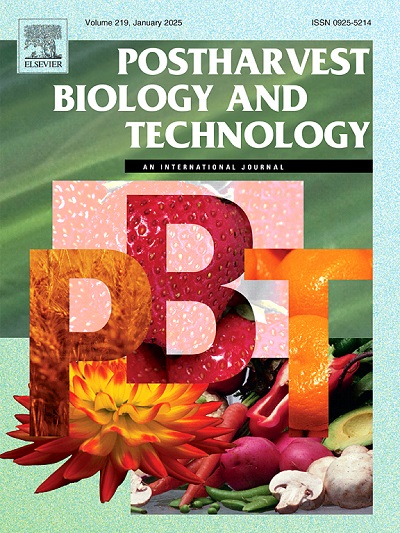Sodium trans-2-hexenylate damages the mitochondrial function of Penicillium digitaum and plays a significant role in citrus fruit postharvest disease control
IF 6.4
1区 农林科学
Q1 AGRONOMY
引用次数: 0
Abstract
Huge postharvest citrus infections are produced by Penicillium digitatum. The antifungal activity of sodium trans-2-hexenylate (STH) against the P. digitatum growth and possible mechanism were investigated. The minimal inhibitory and fungicidal concentrations of STH against P. digitatum were 0.4 and 0.8 g L–1, respectively. STH decreased the green mold incidence of Ponkan fruit without negatively impacting fruit quality. STH altered and distorted the external appearance of P. digitatum mycelia rather than the cell wall. Correspondingly, STH decreased the lipid and ergosterol levels while degrading the cell membrane integrity. Meanwhile, STH affected mitochondrial function by lowering the mitochondria membrane potential (MMP) and ATP levels, as well as malate dehydrogenase (MDH) and succinate dehydrogenase (SDH) activities. Furthermore, MMP damage occurred earlier than that of cell membrane damage. Our current study showed that STH may be an acceptable substitute to chemical fungicide in postharvest disease control in citrus fruit and its underlying inhibitory mechanism is attributed to its ability to impair the mitochondrial function of P. digitatum.
求助全文
约1分钟内获得全文
求助全文
来源期刊

Postharvest Biology and Technology
农林科学-农艺学
CiteScore
12.00
自引率
11.40%
发文量
309
审稿时长
38 days
期刊介绍:
The journal is devoted exclusively to the publication of original papers, review articles and frontiers articles on biological and technological postharvest research. This includes the areas of postharvest storage, treatments and underpinning mechanisms, quality evaluation, packaging, handling and distribution of fresh horticultural crops including fruit, vegetables, flowers and nuts, but excluding grains, seeds and forages.
Papers reporting novel insights from fundamental and interdisciplinary research will be particularly encouraged. These disciplines include systems biology, bioinformatics, entomology, plant physiology, plant pathology, (bio)chemistry, engineering, modelling, and technologies for nondestructive testing.
Manuscripts on fresh food crops that will be further processed after postharvest storage, or on food processes beyond refrigeration, packaging and minimal processing will not be considered.
文献相关原料
公司名称
产品信息
索莱宝
MDA content kit
索莱宝
LOX activity kit
阿拉丁
Trans-2-hexenoic acid
 求助内容:
求助内容: 应助结果提醒方式:
应助结果提醒方式:


